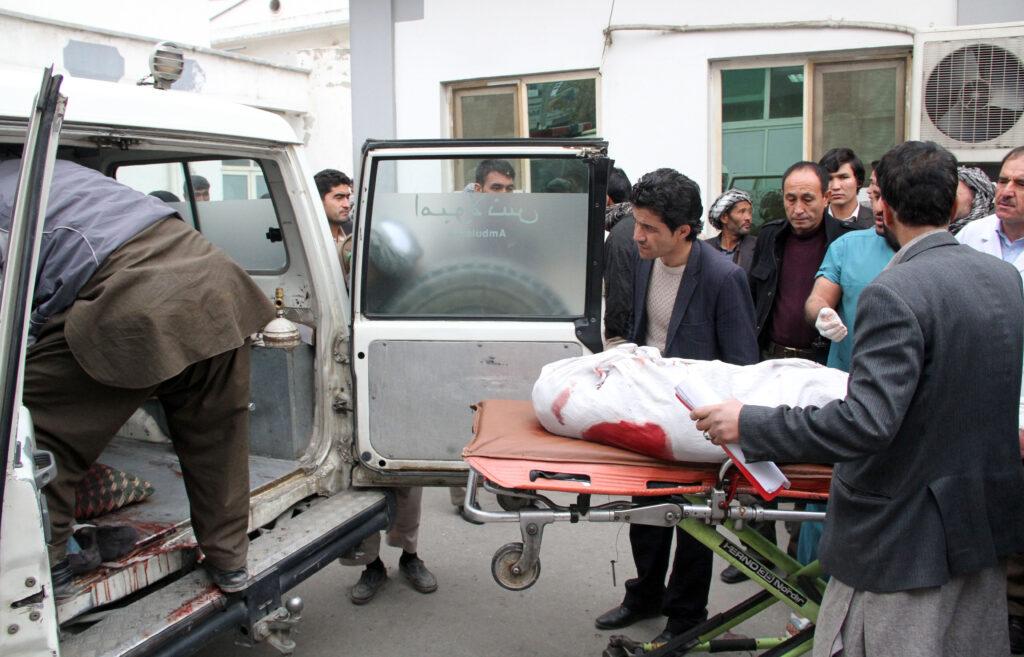KABUL (Pajhwok): More than 3,000 people were killed and wounded in Afghanistan in August, when 215 attacks took place, showing a 10 percent spike in casualties compared to the corresponding period last year.
Pajhwok Afghan News reports based on different sources show violent attacks took place in 30 provinces in August, including 105 face-to-face clashes, 41 targeted attacks, 33 blasts, 23 airstrikes and 13 suicide assaults.
During these attacks, 14 of every 22 people suffered casualties in direct engagements, two in suicide attacks, three in airstrikes and one each in targeted attacks and explosions.
Most of the attacks, , 82 occurred in Helmand, Nangarhar, Kandahar and Jawzjan provinces and the rest — 133 — in 26 other provinces. Pajhwok received no report regarding violence from Daikundi, Bamyan, Takhar and Panjsher provinces in August.
In July, Nangarhar, Faryab, Kandahar and Helmand witnessed most of the attacks while no security incidents were reported from Panjsher, Daikundi, Bamyan and Khost provinces.
On average, statistics show 27 people suffer casualties in each suicide attack, 19 in face-to-face clashes, 17 in airstrikes, six in blasts and three in targeted.
Lawmaker and political commentator Abdul Jabbar Qahraman said suicide attacks caused more casualties because they happened in crowded areas.
He said the conflict intensified last month and that was why people suffered more casualties in face-to-face fighting.
After suicide attacks and face-to-face clashes, airstrikes targeting both militants and civilians were the third biggest source of casualties, he explained.
“For example, 140 militants suffered casualties in airstrikes in the Nesh area of Kandahar province… civilians also suffer casualties in such attacks due to mistakes or negligence,” Qahraman added.
Casualties
Reports show 1,895 people were killed and 1,164 others injured in 215 attacks in August across Afghanistan. The victims included militants, Afghan forces and civilians.
But Pajhwok does not release exact casualty figures because different sources provide different accounts. August 28 saw the highest number of attacks, 14, but the deadliest day was August 2 when 220 people were killed and wounded.
More than half of the casualties happened in Helmand, Kandahar, Uruzgan, Paktika, Ghazni and Sar-i-Pul provinces.
In July, most of casualties happed in Faryab, Nangarhar, Kandahar, Helmand, Baghlan, Nuristan, Uruzgan, Balkh and Paktia provinces. Qahraman said: “Intensity of attacks changes locations because it is a tactic of militants, who want to mount as much pressure on the government as possible.”
Brig. Gen. Mohammad Radminsh, deputy spokesman for the Ministry of Defense (MoD), said: “Daesh or Islamic State (IS) militants were more active in Nangarhar, but they were subjected to brutal attacks. It’s natural that when militants face severe attacks in an area, they switch locations.”
He added the Afghan forces were fully ready to beat militants wherever they surfaced.
Pajhwok reports indicate casualties have increased each month — from January to May this year. But the figures dropped by 46 percent in June before they increased again in the last two months.
Abdul Jabbar Qahraman said that the conflict in Afghanistan, having a global dimension, could intensify when world powers brought their rivalries to the conflict-crippled the country.
“Ever-since its creation, Pakistan — our immediate neighbour — has been intolerant of a powerful and stable Afghanistan. It has always hatched conspiracies against our country. Considering the ongoing situation in Afghanistan, the region and the world at large, I believe the war would intensify,” he warned.
The MoD deputy spokesman acknowledged the number of attacks in 2017 had been higher than the previous year. Insurgents have been trying to showcase their strength because they want to tell the Brussels Conference that they can still create problems.
“Pakistan has been under intense pressure from the international community this year, so it pressed rebel outfits to find save havens inside Afghanistan and capture at least six provinces. But fortunately, the enemies have failed to realise their goals,” he commented.
Stop killing Afghans
Relatives of war victims say the decline in attacks is encouraging but durable peace and stability still remains elusive. Habibiullah, a resident of the Maiwand district of Kandahar, recently lost two brothers and a relative in a roadside bombing.
“It is a story of every family; you cannot find a household that hasn’t not lost loved ones in this unfortunate war. How long will the Afghans lose their lives? It is no longer tolerable,” he remarked.
He asked warier sides to stop fighting and join peace process and put an end to the Afghans bloodshed.
Abdul Ghani, 18, a resident of Lashkargah, the capital of southern Helmand province who lost his mother in a suicide attack in front of the police headquarters last week, asked the warring sides to quit fighting — or at least avoid conducting attacks in public places.
mds/mud
Views: 10
